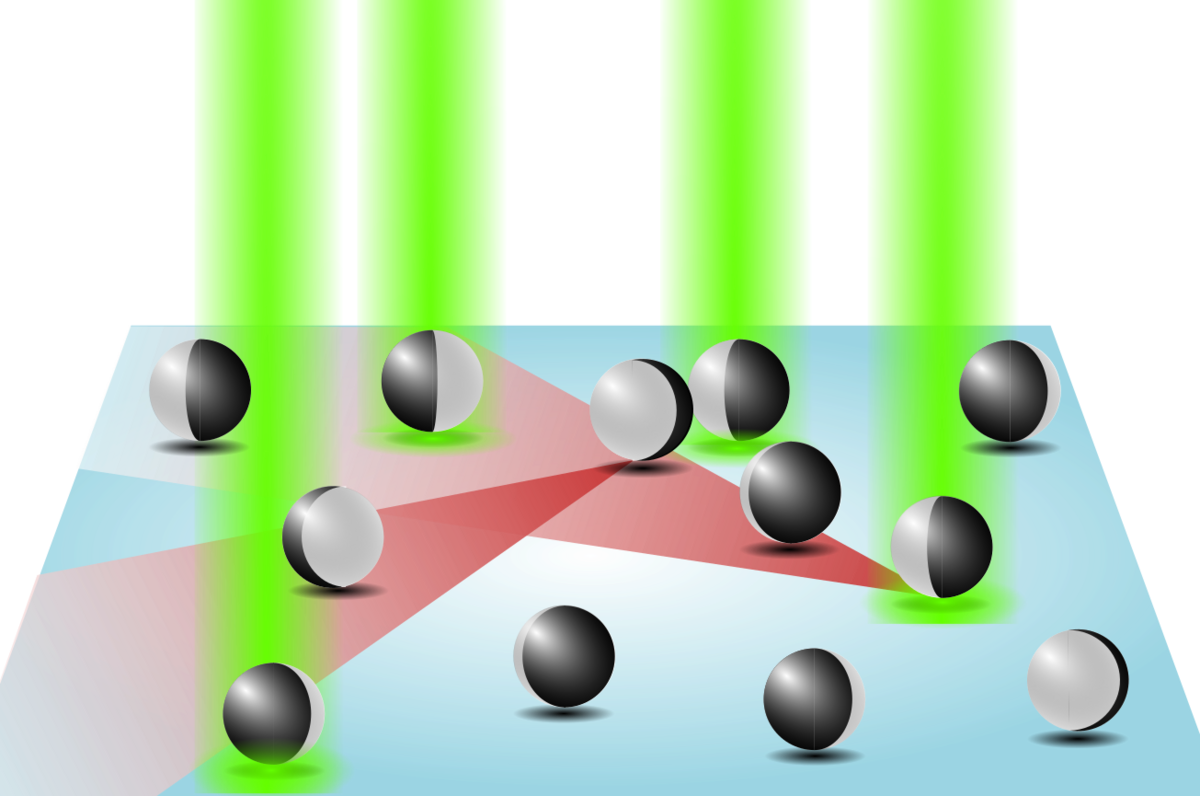
Photo: Noemi Furlani
Microscopic swimmers with visual perception of group members form stable swarms
Birds, fish and bacteria often gather into groups or swarms. This so-called collective behaviour requires all group members to continuously and reciprocally adapt their movements. It can be a challenging task, however, for researchers to ascertain the specific environmental stimuli that individuals respond to within the context of their group; in addition to optical and acoustic information, flow resistances or chemical messengers can also play a role. By designing experiments with artificial microswimmers, we were able to show that the formation of stable groups requires only few skills: forward visual perception over large distances and regulation of the speed according to the number of perceived individuals. In addition to providing more insight into collective phenomena, the experiments can also be used for research on autonomous systems.
External Page
To view this content (source: www.xyz.de ), please click on Accept. We would like to point out that by accepting this iframe, data could be transmitted to third parties or cookies may be stored.
You can find more information on our privacy policy .
| Further Information |
|---|
| Group formation and cohesion of active particles with visual perception-dependent motility |
| F. Lavergne, H. Wendehenne, T. Bäuerle, C. Bechinger, Science, 364, 70 (2019) |
| Find latest related news on Altmetric |
| Press Release |
| Pressemitteilung (German) |
